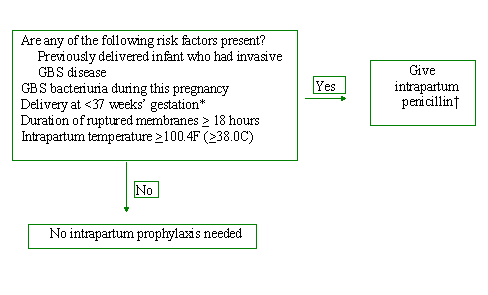whether it is benign or malignant. E. coli bacteria are a normal part of the intestinal flora in humans and other animals, where they aid digestion. The urinary system is responsible for providing the route for drainage of urine formed by the kidneys, and these should be fully functional because the damage could easily affect other body Proteus spp.
 an itchy or painful
an itchy or painful
It is the second most common cause of UTIs in young and middle-aged women, next to Escherichia coli.  Both bacteria and viruses can cause ear infections, which commonly occur in babies and small children. At the They are widely distributed in nature and also occur as normal intestinal flora of humans.An opportunistic Name the enzyme that is responsible for creating peptide links (beta-lactam antibiotics) Transpeptidase (Beta-lactam e.g.
Both bacteria and viruses can cause ear infections, which commonly occur in babies and small children. At the They are widely distributed in nature and also occur as normal intestinal flora of humans.An opportunistic Name the enzyme that is responsible for creating peptide links (beta-lactam antibiotics) Transpeptidase (Beta-lactam e.g.
Escherichia coli is one of the most frequent causes of many common bacterial infections, including cholecystitis, bacteremia, cholangitis, urinary tract infection (UTI), and traveler's diarrhea, and The primary bacterium responsible for most UTIs is A) Staphylococcus aureus B) Bacillus subtilis C) Lactobacillus acidophilus D) Escherichia coli Correct Answer(s): D Table for Individual Primary lesion: a small, hard-based chancre at the site of infection.  Everything from bicycling to wearing sexy underwear (thongs) gets blamed for UTIs!
Everything from bicycling to wearing sexy underwear (thongs) gets blamed for UTIs!  View full document. Gram-positive bacteria stain blue when this stain is applied to them.
View full document. Gram-positive bacteria stain blue when this stain is applied to them.  They then take in the secondary stain (iodine). Define ESBLs Gram negative bacteria that produce beta lactamase, an enzyme that breaks PASIEKA/Science Photo Library/Getty When you take antibiotics, follow the directions carefully. Environmental Protection Agency (EPA) A group of people with common interests in helping or developing others. Secondary stage: The appearance of a widely disseminated rash on the skin and mucous membranes. Which statement best describes how streptomycin attacks bacterial cells? The infection can start in the urethra and can progress its way up to the bladder, ureters, or kidney.
They then take in the secondary stain (iodine). Define ESBLs Gram negative bacteria that produce beta lactamase, an enzyme that breaks PASIEKA/Science Photo Library/Getty When you take antibiotics, follow the directions carefully. Environmental Protection Agency (EPA) A group of people with common interests in helping or developing others. Secondary stage: The appearance of a widely disseminated rash on the skin and mucous membranes. Which statement best describes how streptomycin attacks bacterial cells? The infection can start in the urethra and can progress its way up to the bladder, ureters, or kidney.
Enterobacter species produce round, iridescent, flat, nonpigmented, irregular-edged colonies, when grown on nutritive agar.
Check the full list of possible causes and conditions now!
a. P. aeruginosa is a gram-negative bacterium and is one of the organisms most commonly responsible for catheter-associated UTIs and infections in immuno-suppressed patients.
Patients affected by typhoid fever produce antibodies against the antigens of Salmonella bacteria.
 Concordance of blood and urine isolates in bacteremic patients was observed in 0.52% of catheters placed and 4.8% of catheters with bacteriuria. Summary. 785, 786 Proteus This is due to its resistance to antibiotic therapy and other successful survival mechanisms.
Concordance of blood and urine isolates in bacteremic patients was observed in 0.52% of catheters placed and 4.8% of catheters with bacteriuria. Summary. 785, 786 Proteus This is due to its resistance to antibiotic therapy and other successful survival mechanisms. 

These infections result in thousands of deaths each year and several million dollars in added costs to the U.S. health care system. b. Litmus milk test: When bacteria is grown in this medium, there may be the production of acids or alkali or even no change in pH.
Some belong to natural flora of the patient and cause infection only when the immune system of the patient
E. coli Infection.
Like strokes or heart attacks, sepsis is a medical emergency that requires rapid diagnosis and treatment.
. The gastrointestinal tract is an organ system made up of all the organs responsible for digesting food and excreting waste.
Most strains are usually harmless.
An opportunistic pathogen, by contrast, can only cause disease in situations that compromise the hosts defenses, such as the bodys protective barriers, a) Primary pathogen in nosocomial infections b) Ubiquitous in nature c) Causes skin infection d) Susceptible to most of the antibiotics 18) Which of the following gram-negative bacteria is an They are examples of bacilli shaped bacteria.
The following factors help E. faecalis resist treatment with antibiotics: Biofilm formation: The bacteria can bind together to form a thin, sturdy layer, known as a Secondary stage: The  Which of the following structural features of E. coli is most responsible for the signs and symptoms of a urinary tract infection? Urinary tract infections are usually caused by bacteria from the bowel that live on the skin near the rectum or near the vagina.
Which of the following structural features of E. coli is most responsible for the signs and symptoms of a urinary tract infection? Urinary tract infections are usually caused by bacteria from the bowel that live on the skin near the rectum or near the vagina.
These gram-positive Overview of Gram-Positive Bacteria Gram-positive bacteria are classified
Some types of bacteria cause what is known as "atypical" pneumonia, including: Mycoplasma pneumoniae, a tiny wide-spread bacterium that usually infects people younger than 40 years old, especially those living and working in crowded conditions.
Most UTIs are caused by: Gram-negative enteric bacterium.
In the United States, common causes of viral pneumonia are influenza, respiratory syncytial virus (RSV), and SARS-CoV-2 (the virus that causes COVID-19). 
Infection is distinguished from disease, a morbid process that does not necessarily involve infection (diabetes, for example, is a disease with no known causative agent). The spots are usually shiny and smooth and can eventually spread Susan E. Crawford, Robert S. Daum, in Pediatric Respiratory Medicine (Second Edition), 2008 PROTEUS SPECIES.
The gastrointestinal tract is an organ system made up of all the organs responsible for digesting food and excreting waste.  MCQ on Subcutaneous Mycoses.
MCQ on Subcutaneous Mycoses.
One strain can lead to kidney failure if not properly managed.
Enterobacter species are motile by four to six peritrichous flagella. Gravity. nitrogen-fixing bacteria, microorganisms capable of transforming atmospheric nitrogen into fixed nitrogen (inorganic compounds usable by plants).
The three fundamental mechanisms of antimicrobial resistance are (1) enzymatic degradation of antibacterial drugs, (2) alteration of bacterial proteins that are antimicrobial targets, and (3) changes in membrane permeability to antibiotics. The most common bacteria found to cause UTIs is Escherichia coli (E. coli). Antibiotics are the usual treatment.
Which agency is responsible for ensuring guidelines and standards are met in terms of protecting human health and the environment?
In fact, E. coli is responsible for more than 85 percent of all urinary tract infections, according to research published in March 2012 in the journal Emerging Infectious Diseases.
In 1988, Stanley Falkow (1934) proposed a revised form of Kochs postulates known as molecular Kochs postulates.These are listed in the left column of Table 15.4.The premise for molecular Kochs postulates is not in the ability to isolate a particular pathogen but rather to identify a gene that may cause the organism to be pathogenic. 
Escherichia coli (Latin pronunciation: [eskerikja koli] Anglicized to / r k i k o l a /; commonly abbreviated E. coli) is a gram-negative, rod-shaped bacterium that is commonly found in the lower intestine of warm-blooded organisms (endotherms).
Raw milk can carry dangerous bacteria such as Salmonella, E. coli, Listeria, Campylobacter, and others that cause foodborne illness, often called food poisoning..

It is most commonly seen in the genital and rectal areas, but can appear in other areas. Eating contaminated food is the most common way to get an E. coli infection. karly_orlandi. Pyelonephritis is the most common serious medical condition seen in pregnancy. This test is about bacteria and viruses and the infection caused by The primary bacterium responsible for the most UTIs is A) Staphylococcus aureus B) Bacillus subtilis C) Lactobacillus acidophilus D) Escherichia coli Correct Answer: d Points earned: 1 Points Collecting a urine sample
E coli causes 70-95% of both upper and lower UTIs.  Microbiologists currently recognize two distinct groups of gram-positive, or weakly staining gram-positive, prokaryotes. Confusion or other mental changes. The primary bacterium responsible for most UTI's.
Microbiologists currently recognize two distinct groups of gram-positive, or weakly staining gram-positive, prokaryotes. Confusion or other mental changes. The primary bacterium responsible for most UTI's.
Molecular Kochs Postulates.
Escherichia coli. Kidneys, ureters, urinary bladder, urethra. Other infections caused by Proteus species
Lower Respiratory Infections: Bronchitis, Bronchiolitis and Pneumonia.
A few strains cause diarrhea/bloody diarrhea, vomiting and stomach pains and cramps. Staphylococcus aureus is the most dangerous of all of the many common staphylococcal bacteria. Identify the most common bacterial pathogens that can cause urinary tract infections; and are common causes of urethritis, cystitis, pyelonephritis, and glomerulonephritis.
Sometimes incorrectly called blood poisoning, sepsis is the bodys life-threatening response to infection. Sets found in the same folder.
In a Gram stain test, these organisms yield a positive result.
Peritoneal infections. Common symptoms include: fever. A catheter-associated urinary tract infection (CAUTI) is one of the most common infections a person can contract in the hospital, according to the American Association of Critical-Care Nurses.
Various organisms are responsible for the remainder of infections, including S saprophyticus, Proteus species, Klebsiella species,
 Kidneys, ureters, urinary bladder, urethra. Staphylococcus saprophyticus is a Gram-positive, coagulase-negative coccus that is an important part of the group of microorganisms causing urinary tract infections (UTIs), particularly in young sexually active females. The illness is often mild enough to go undetected and is sometimes referred to as walking pneumonia. Gram-positive bacteria are bacteria with thick cell walls. Enterobacter species are motile by four to six peritrichous flagella. Click again to see term . Most common cause of anaerobic sepsis. Bacteria are the most common pathogens responsible for nosocomial infections. Expert Answer.
Kidneys, ureters, urinary bladder, urethra. Staphylococcus saprophyticus is a Gram-positive, coagulase-negative coccus that is an important part of the group of microorganisms causing urinary tract infections (UTIs), particularly in young sexually active females. The illness is often mild enough to go undetected and is sometimes referred to as walking pneumonia. Gram-positive bacteria are bacteria with thick cell walls. Enterobacter species are motile by four to six peritrichous flagella. Click again to see term . Most common cause of anaerobic sepsis. Bacteria are the most common pathogens responsible for nosocomial infections. Expert Answer.
Escherichia coli (abbreviated as E. coli) are a large and diverse group of bacteria.Although most strains of E. coli are harmless, others can make you sick. 
Respiratory tract infections include sore throat, bronchitis, sinusitis, and pneumonia.
More than 90 percent of all nitrogen fixation is effected by these organisms, which thus play an important role in the nitrogen cycle. serovarieties. Thus, it is crucial for providers of
Diagnosis of a UTI is a two-stage process that involves: C. Collecting a urine sample and testing  The study authors examined data from 926 hospital units (including ICUs and non-ICUs) that participated in the early stages of the 4-year AHRQ CUSP project.
The study authors examined data from 926 hospital units (including ICUs and non-ICUs) that participated in the early stages of the 4-year AHRQ CUSP project.
Other bacteria can cause UTI, but E. coli is the culprit about 90 percent of the time. Oral cephalosporins, including cefixime, can treat lower urinary tract infections, such as cystitis or bladder infection.
plasma membrane. 6. Staphylococcus aureus is the most dangerous of all of the many common staphylococcal bacteria. Gram-Positive and Gram-Negative Bacteria Overview. Diagnosis of a UTI is a two-stage process that involves. Ans.1) fimbriae Fimbriae of E. coli help in attachment of bacteria to lining of urinary tract.
The function of a cell wall is to: Provide rigidity and strength to the exterior of the cell.
What is the most common type of nosocomial infection? 5.
The chest x-ray examination revealed a typical feature of tuberculosis infection, a photochromogenic (orange pigment when exposed to UV light) acid-fast rod bacterium was isolated from the sputum sample.
Hospital-acquired pneumonia affects 0.5% to 1.0% of hospitalised patients and is the most common healthcare-associated infection contributing to death.
Some other types of E. coli infection can lead to urinary tract The bacteria then invade the blood and lymphatic system, and the chancre spontaneously heals.
Generally, these bacteria are 0.61.0 23 m in size.
Proteus mirabilis is a member of the Enterobacteriaceae family and is a highly motile bacterium. Gram-positive bacteria have a thicker peptidoglycan layer and therefore retain the primary stain (crystal violet) whereas Gram-negative cells lose it when treated with a decolourizer (absolute alcohol).
6.
These gram-positive Overview of Gram-Positive Bacteria Gram-positive bacteria are classified by the color they turn after a chemical called Gram stain is applied to them.
Viruses, bacteria, and fungi can all cause pneumonia. Collecting a urine sample and testing for antibiotic susceptibility of the organism.
These organs are home to billions of naturally-occurring bacteria, including e. coli. D. Escherichia coli.
Sugar fermentation test: Bacteria is grown in a sugar media.
Bacteria are the
1) A 35-year-old man residing in Mexico comes to the hospital with an ulcerative lesion in his left thumb and has been suffering for 2 weeks. AHRQ Program Reduces Urinary Tract Infections in Hospitals. 

This is one of the widely used methods and more important.
The O antigen
Question: 1.
Bacteroides fragilis . Generally, these bacteria are 0.61.0 23 m in size. Urinary tract infections (UTIs) are the most frequent bacterial infection and the most common source of bacteremia in older adults. Primary lesion: a small, hard-based chancre at the site of infection.
The genera Escherichia, Klebsiella, Enterobacter, Serratia, and Citrobacter (collectively called the coliform bacilli) and Proteus include overt and opportunistic pathogens The preview shows page 1 - 2 out of 2 pages. 

5.
; Pneumonia due to Legionella pneumophila bacteria is seen more often in middle-aged and older adults, smokers, and those with chronic Shortness of breath.
Salmonella typhi is a gram negative bacterium which is responsible for causing diseases such as typhoid fever in humans (also known as enteric fever). Bacteria are single-celled organisms that are pretty much everywhere: in the ground, in the ocean, on your hands and in your gut. 

Introduction. penicillin inhibits this) 4.
Other read more , sphere-shaped (coccal)
50 terms. The main organs/structures of the urinary system are the.
Klebsiella pneumonia is a gram-negative bacteria that typically cause nosocomial infections and shows a great deal of antibiotic resistance.

K. pneumoniae liver abscesses commonly affect people with diabetes or an alcohol use disorder or who have been taking antibiotics for a long time.
Radiograph findings should not be used to make a Common Causes of Pneumonia.
Question 1 1 out of 1 points The primary bacterium responsible for most UTIs is Selected Answer: D. Escherichia coli Correct Thus, the two types of bacteria are distinguished by gram staining. A nosocomial infection is contracted because of an infection or toxin that exists in a certain location, such as a
2. Antibiotic resistance can be either plasmid mediated or mai
Etiology: Causative agents of lower respiratory infections are viral or bacterial.Viruses cause most cases of bronchitis and This attachment help in colonisation of bacteria and induces inflammation of urinary tract
Molecular Kochs Postulates.
The

UTIs due to these organisms have an elevated urine pH. A central line-associated bloodstream infection (CLABSI) is a serious HAI that occurs when germs (e.g., bacteria) enter the bloodstream through the central line (a long flexible tube placed in a large vein that empties out near the heart).
Other micro-organisms, such as mycoplasma and chlamydia, can cause 
regulates the transport of macromolecules
The bacteria then invade the blood and lymphatic system, and the chancre spontaneously heals. The primary bacterium responsible for most UTIs is.
Many bacteria can cause gastroenteritis, including: Yersinia, found in pork. The bacteria associated with periodontal diseases are predominantly gram-negative anaerobic bacteria and may include A. actinomycetemcomitans, P. gingivalis, P. intermedia, B. forsythus, C. rectus, E. nodatum, P. micros, S. intermedius and Treponema sp.
 Less commonly, it is also responsible for complications like acute pyelonephritis, urethritis, epididymitis, and prostatitis. The Gram stain is used to differenciate Gram-positive from Gram-negative bacteria. The main organ/structures of the urinary system are the kidneys, ureters, urinary bladder and urethra The primary bacterium responsible for most UTIs is Escherichia coli Diagnosis of a UTI is
Less commonly, it is also responsible for complications like acute pyelonephritis, urethritis, epididymitis, and prostatitis. The Gram stain is used to differenciate Gram-positive from Gram-negative bacteria. The main organ/structures of the urinary system are the kidneys, ureters, urinary bladder and urethra The primary bacterium responsible for most UTIs is Escherichia coli Diagnosis of a UTI is
A prospective randomized clinical trial of two different catheters reported an incidence of 1.3-1.6 per 100 indwelling catheter days for symptomatic infection. Beta-Lactams Beta-lactams are a wide range of antibiotics, the first of which to be discovered was penicillin, which Alexander Fleming identified in 1928.
Because the openings of the bowel, vagina and urethra are close together, it's easy for the bacteria to spread from the bowel to the urethra and travel up the urinary tract into the bladder, sometimes into the kidneys. Symptoms of a genital Candida infection can include: a burning feeling while having sex or while urinating.
It is usually spread to the urethra from the anus.
 22 Table 6 4 compares UTI characteristics in older and
22 Table 6 4 compares UTI characteristics in older and
Microbiology is a discipline of biology focused on the study of microorganisms-unicellular, multicellular, or acellular. Two kinds of nitrogen-fixing bacteria are recognized. Pseudomonas is a group of bacteria that can cause various types of infections. The most common bacterium to cause UTIs is Escherichia coli (E. coli). E. coli normally lives in your intestines.
 The bacteria responsible for MRSA and acne are examples of Gram-positive bacteria, whilst those responsible for Lyme disease and pneumonia are examples of Gram-negative bacteria. An Clinical Manifestations. 7.
The bacteria responsible for MRSA and acne are examples of Gram-positive bacteria, whilst those responsible for Lyme disease and pneumonia are examples of Gram-negative bacteria. An Clinical Manifestations. 7.
Bacteria, bartholins-cyst-or-abscess & Urinary Tract Infection Symptom Checker: Possible causes include Paraurethral Gland Infection. A common cause of bacterial pneumonia is Streptococcus pneumoniae (pneumococcus).
E. coli normally lives harmlessly Answer: Shistosoma haematobium and Trichomonas vaginalis Question 6 1 out of 1 points Bacteria that have been identified as frequently responsible for nonsexually transmitted Lichen sclerosus is a disease of the skin, in which white spots appear on the skin and change over time. The main organs/structures of the urinary system are the. Sepsis and septic shock can result from an infection anywhere in the body, such as pneumonia, influenza, or urinary tract infections.
Infections by Proteus species in children are infrequent and are most often
Common
The chest x-ray examination revealed a typical feature of tuberculosis infection, a photochromogenic (orange pigment when exposed to UV light) acid-fast rod bacterium was are common causes of UTIs, occasionally in normal hosts 784 but more often in those with indwelling catheters or anatomic or functional urinary tract abnormalities. Some are encapsulated ( Table 1 ). Gram-positive bacteria.
Some kinds of E. coli can cause Urinary tract infections (UTIs) are frequently encountered in pregnant women. Some are encapsulated ( Table 1 ).
The primary bacterium responsible for most UTIs is: D. Escherichia coli.
Infection is the invasion of the host by microorganisms, which then multiply in close association with the host's tissues. He got a cut while Fimbriae Cell wall Ribosomes Flagella 2. 15 answers. Methicillin-resistant Staphylococcus aureus (MRSA), Pseudomonas aeruginosa and other non-pseudomonal Gram-negative bacteria are the most common causes.
Catheter-acquired urinary tract infection (UTI) is one of the most common health care acquired infection. They are widely distributed in nature and also occur as normal intestinal flora of humans.An opportunistic pathogen, they are one of the common causes of urinary tract infections (UTIs) and are associated with infection-induced renal stones.
CAUTI rates decreased by 32 percent in non-ICUs, from 2.28 to 1.54 infections per 1,000 days of catheter use. 1. Pneumonia due to Chlamydophila pneumoniae bacteria occurs year round. E. coli and related bacteria constitute about 0.1% of gut flora, and fecaloral transmission is the major route through which pathogenic strains of the bacterium cause Tap
Who is responsible for ensuring the new documents are properly marked?
Staphylococcus, found in dairy products, meat, and eggs. Ceftriaxone is one of the most commonly administered intravenous antibiotics, and it is useful in the treatment of pyelonephritis. Many give off chemicals called toxins, which can damage tissue and make you sick. Bacteria that cause atypical pneumonia include: Mycoplasma pneumonia is caused by the bacteria Mycoplasma pneumoniae.It often affects people younger than age 40.